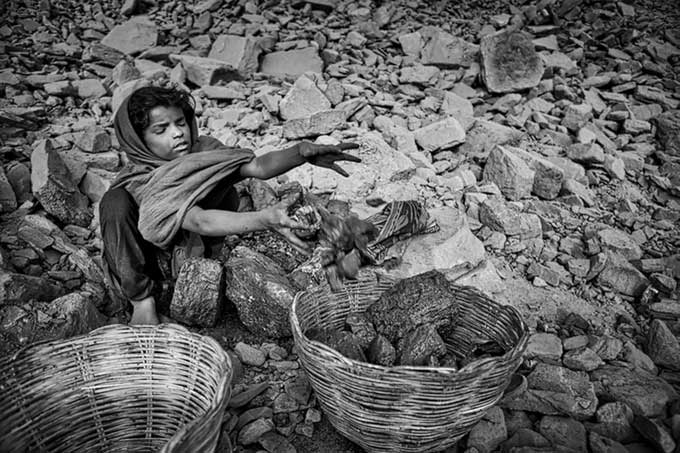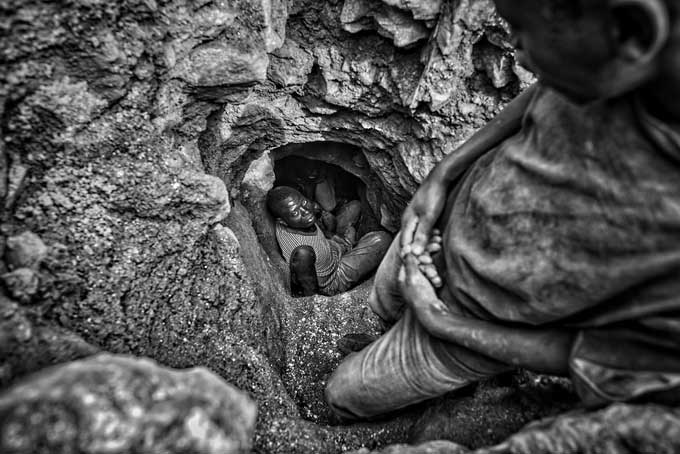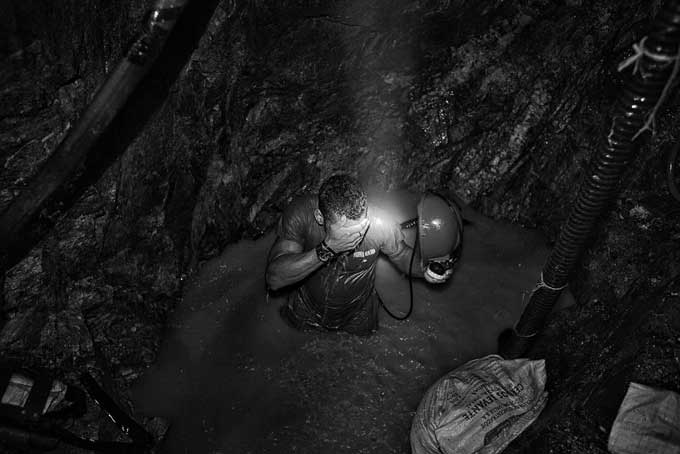Since 2012 Erberto Zani started a photoreportage on illegal mineral extractions around the world.
«Black World» is his photo book project, on Kickstarter, created as a tryptych: three continents (South America, Africa, Asia), three countries (Colombia, Democratic Republic of Congo, India), three illegally extracted minerals (gold, coltan, coal), three causes that lead to criminality.


The book
Minerals of blood in «Black World»
It’s a black world that millions of people are forced to work in, made of mines, dust and fear. Characterized by oppression, violence and trampled human rights: where the presence of enormous deposits of minerals transform into a curse for the people through the illegality caused by games of power and corrupt economies. This book aims to be also a testimony, a voice so not to forget the «invisibles»: those who are not considered as part of history with a capital “H”, but simply try to escape being crushed by the wave of progress, often represented by interests without moral conscience. Observing how the human being adapts to every circumstance, even living without any hope in life, is the aspect that strikes the most.
«Black World» describe one situation in Democratic Republic of Congo, where the words “Republic» and “Democratic» sound like the countless scars inflicted on its civil population, politics is administered on the basis of corruption and favoritism. A country where the absence of government, the division of power between different military groups and the intrusion of shameless and unethical foreign interests have caused a complete military arming of the economy and a real marketing of violence. In this chaos the natural resources, particularly coltan, become oxygen for the smouldering embers of war.
In India, where the population of the small village of Bokohapadi is forced to steal its own coal found underground. This, because of industrial-scaled extraction projects run by government-aided companies, categorically without acknowledging or compensating the rightful owners of the land.
In Colombia, in a remote area of Antioquia, a community of gold miners has been struggling to fight for its own existence for years, asking the government to legalize the mine. This request amidst the dangers of working underground with inadequate equipment and under definite threat of being killed by paramilitary groups.
The photographs gathered for «Black World» were taken during various journeys between 2012 and 2015. In the studio during post-production, I decided to use a “dirty” black and white theme, combined with unusual cuts; the aim was to emphasize the feeling of oppression and suffocating that epitomizes the existence of the people concerned.

Features of the book
The hardcover book will measure 23×23 cm (22×22 cm inside), 120 pages on high quality paper of 200 gr, images in a very good black created with four colours and will be printed at La Stamperia in Parma (Italy) Black World contains around 100-120 black and white images, one introduction to the book and three reportage in english and italian languages.






